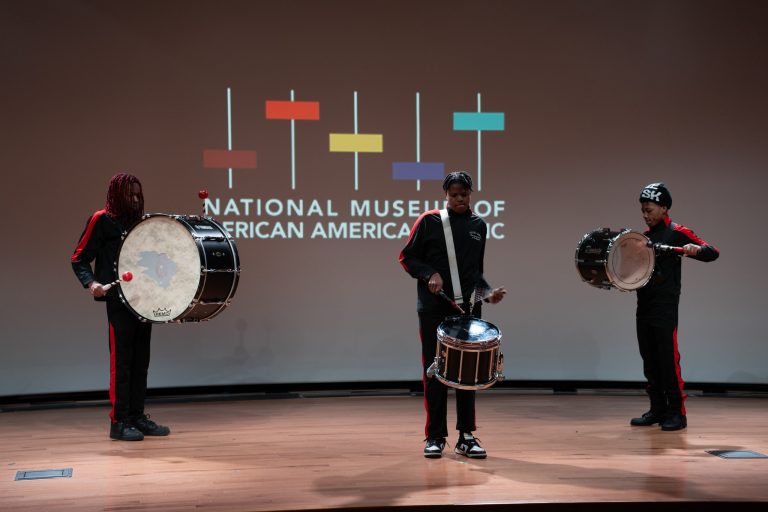Integrating STEM at Jamestown-Yorktown Historical Sites for Deeper Connections
Historical sites are defined by their significance in cultural, political or social history. They offer a unique educational setting that goes beyond traditional classrooms. By engaging with artifacts, architecture and landscapes, learners can contextualize historical events and explore the stories behind them. One of the most significant advantages of an interdisciplinary approach to education is the enhancement of critical thinking skills. These approaches encourage students to analyze information from multiple perspectives, developing a deeper understanding of complex subjects.
At Jamestown Settlement and the American Revolution Museum at Yorktown, learners are greeted by galleries and living history areas that explore the complex histories that came from the convergence of Indigenous, European and African cultures and the legacies that began at the founding of the first permanent English settlement in Tsenacommacah (Virginia) in May 1607. Learners work with educators and interpreters in stations to explore how technology intersects with the past.
 Jamestown Settlement for Student Groups
Jamestown Settlement for Student Groups
At Jamestown Settlement, students engage with 17th-century history and culture, exploring the lives of the Virginia Indians who occupied the landscape for centuries, the arrival of English colonists in 1607, and the first documented arrival of West Central Africans in 1619, leading to cultural encounters and events that planted the seeds of a new nation. Science and technology are integral in civilizations at different ages, and the education and interpretive staff at the museum work hard to show that technology is more than just phones and tablets.
In the re-created Paspahegh Town and James Fort, learners explore how fire is used in different mediums–from cooking meals to clearing trees, smithing metals and firing weapons. Fire is one of the most significant technologies and exploring the different uses allows learners to start their visit with something they are familiar with as they explore the potentially unfamiliar history of the early colonial era. Students continue their explorations by learning about 17th-century navigational practices on the ships–understanding how dead reckoning was used by the English to navigate across the Atlantic Ocean.
Learners may explore the use of modern sciences in discovering the past. Stations allow students to use salinity tests to explore the changes in the James River throughout the year. Using written accounts from the English in the first year, these tests show how the river becomes saltier in the latter half of the year–when the English were beginning to succumb to illness at a more rapid rate than when they first arrived. This interdisciplinary approach allows students to extrapolate out to today to understand the importance of access to fresh water and the responsibility they have as community members to ensure these resources are accessible to everyone.

For more field trip ideas and opportunities, keep reading from our 2025 Northeast Field Trip Guide.
American Revolution Museum at Yorktown
From the bang of the cannons to the medicinal understandings of herbs and plants, science abounds at the American Revolution Museum at Yorktown. Situated in historic Yorktown, the location of General Cornwallis’ surrender in 1781 effectively assuring victory for the fledgling nation, learners can visit the galleries exploring the causes of tension in the colonies. They’ll also ascertain the American Revolutionary War from different perspectives and the aftermath of the war of now forming a nation, as well as two living history areas examining the Continental Army and a homestead during the war.
In the re-created Continental Army encampment, learners engage with the medical practices of the time and discuss how far medical treatment has come in the ensuring centuries. They will also establish the challenges of a 400-mile march that the troops took to encircle General Cornwallis and use math to think about moving that many people and materials that distance. There is also a recently added station to look at the quartermaster. Integration of math is easy as learners can think about the money soldiers may have had and see the cost of goods being sold by merchants.
Moving to the re-created Revolutionary Era farm, students enter a farmhouse and kitchen to talk about the science and technology of food preservation–something they can very easily relate to in their own lives. They can also explore the mercantilism economic system that ruled during the time and created those tensions that caused colonists to revolt against the crown.
 Jamestown-Yorktown Educational Virtual Programs for Students
Jamestown-Yorktown Educational Virtual Programs for Students
Not able to visit the museum? No problem! Learners can engage with educators to explore how force, motion and energy have existed in all societies throughout history, including Jamestown.
Explore these STEM concepts through the history and cultures that converged in Jamestown, Virginia, the first permanent English settlement in North America. Learn about potential and kinetic energy, force, motion, friction and more by examining a Powhatan bow and arrow and an English matchlock musket. Discover how the STEM connection between past and present can impact your future.
Students who visit the museums (or engage virtually) are met with an inter-disciplinary approach to education that enhances their experience, fosters critical thinking and allows for them to connect the past to the present in applicable experiences. We look forward to fostering student engagement during your visit!
 Submit the Form Below for More Info from Jamestown/Yorktown Foundation
Submit the Form Below for More Info from Jamestown/Yorktown Foundation
- Contact – Felicia Abrams
- Phone – 757-253-4838
- Email – felicia.abrams@jyf.virginia.gov
- Website – www.jyfmuseums.org/














